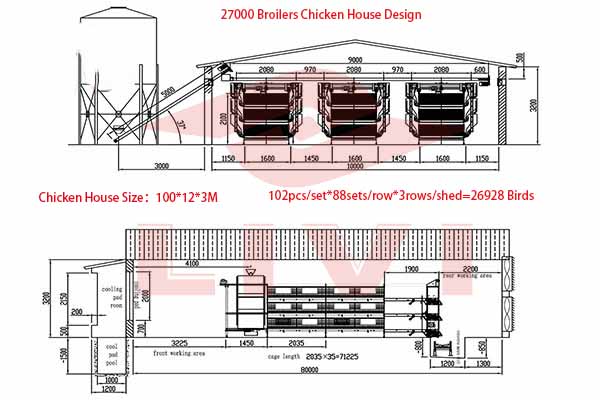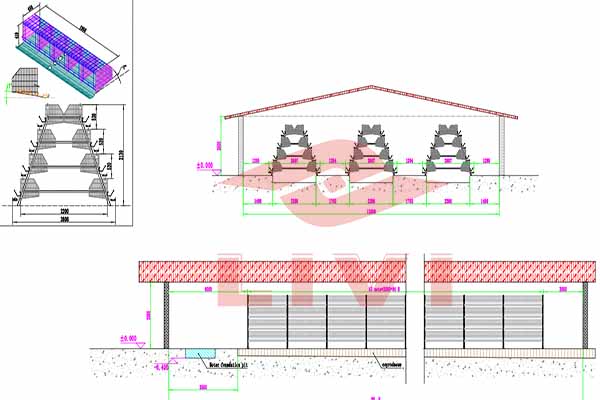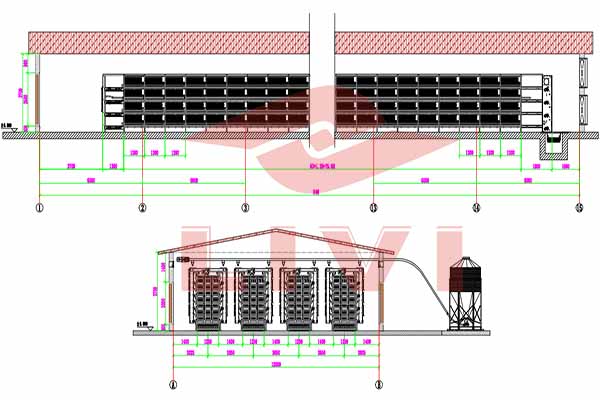How to Set Up Battery Cages for 50,000 Chickens in Zambia
Setting up a large-scale poultry farming operation like a 50,000 chicken battery cage system in Zambia requires careful planning and efficient execution. In this article, we will outline the key steps and considerations for setting up such a facility.
Preparation and Site Selection
- Location: Choose a location with easy access to transportation routes and a reliable power supply.
- Land Availability: Ensure the land is large enough to accommodate the number of chickens and necessary infrastructure.
- Legal Requirements: Obtain all necessary permits and comply with local regulations regarding poultry farming.
Designing the Battery Cages
Battery cages are designed to maximize space efficiency while ensuring the well-being of the chickens. Here are the key design considerations:
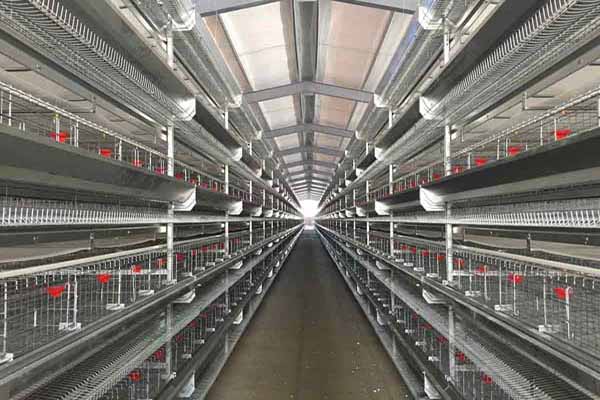
- Cage Size: Each cage should be approximately 0.5 square meters, providing enough space for the chickens to move around.
- Number of Cages: Divide the total number of chickens by the cage size to determine the number of cages needed. For 50,000 chickens, this would be 100,000 individual cages.
- Material: Use sturdy materials like metal or plastic that are easy to clean and sanitize.
- Ventilation: Ensure each cage has proper ventilation to maintain a healthy environment.
Building the Infrastructure
The construction process should include the following stages:
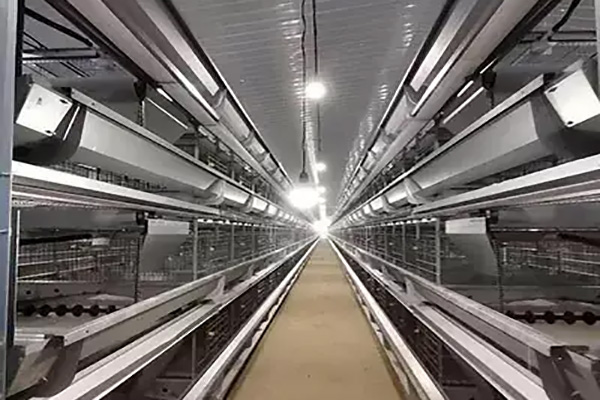
- Foundation: Prepare a solid foundation for the cages to prevent movement and damage.
- Cage Placement: Position the cages in a way that allows for easy cleaning and maintenance.
- Electrical Installation: Install the necessary electrical systems for lighting and ventilation.
- Water Supply: Ensure a constant water supply for the chickens and equipment.
Health and Biosecurity Measures
Health and biosecurity are crucial for the success of a large-scale poultry farm:
- Vaccination Program: Implement a comprehensive vaccination program to protect against common diseases.
- Sanitation: Regularly clean and sanitize the cages and surrounding area to prevent the spread of disease.
- Employee Training: Train staff on biosecurity protocols to minimize the risk of disease introductio
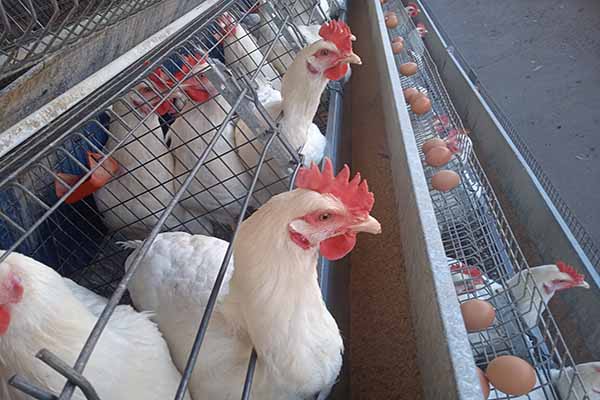 n.
n.
Monitoring and Management
Continuous monitoring and management are essential for the success of your battery cage operation:
- Temperature and Humidity: Monitor the temperature and humidity levels in the cages to ensure they are within the optimal range for chicken welfare.
- Feeding and Watering: Provide adequate feed and water to the chickens at all times.
- Health Monitoring: Regularly check the health of the chickens and address any issues promptly.
By following these steps, you can set up a successful battery cage system for 50,000 chickens in Zambia. For more detailed information and a free design and equipment quote, feel free to leave a comment or contact us at livi-machinery.com.


